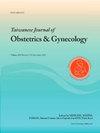膨大囊胚的大小与胚胎倍性状态无关:对434个胚胎的回顾性回顾
IF 2.2
4区 医学
Q2 OBSTETRICS & GYNECOLOGY
引用次数: 0
摘要
目的探讨胚胎发育时间、囊胚内径与倍性状态的关系。材料与方法回顾性观察研究于2021年8月至2023年7月在某高校生殖中心进行。在排除数据缺失的病例后,分析了121个周期的434个胚胎,涉及96名患者。ICSI后延时培养系统中的胚胎。第4天进行激光消融,用于植入前非整倍体基因检测(PGT-A)。根据PGT-A结果,将胚胎分为整倍体、非整倍体和嵌合体。记录Gardner评分系统、第3天和第5/6天的KIDScore,以及从授精到囊胚完全膨大准备孵化的时间(tHB)和囊胚内径的测量。采用Kruskal-Wallis检验对非正态分布的数据进行检验。结果囊胚分为整倍体组、非整倍体组和嵌合体组。tHB差异显著:整倍性(109.27±10.57 h)、非整倍性(114.26±10.90 h)和嵌合性(110.47±10.41 h) (p < 0.001)。囊胚内径的整倍性(133.6±7.8 μm)、非整倍性(133.7±8.3 μm)和嵌合性(133.7±8.4 μm)差异无统计学意义(p = 0.75)。第5/6天较高的KIDScore与整倍性可能性增加相关,而第3天评分无显著影响。亚组分析揭示了不同类型的非整倍体胚胎在持续时间、直径和KIDScore上的相似性,包括那些具有单个、两个或三个染色体异常的胚胎,以及复杂的非整倍体。嵌合胚胎分为低嵌合胚胎(30 - 50%)和高嵌合胚胎(50 - 80%)。低嵌合胚胎在大多数参数上与整倍体相似,而高嵌合胚胎则不同。结论PGT-A辅助孵化后囊胚内径与倍性状态无显著相关性。整倍体胚胎达到完全膨胀的速度更快,而非整倍体和马赛克胚胎需要更长的时间。低马赛克胚胎类似于整倍体胚胎,不像高马赛克胚胎。因此,tHB和第5/6天的KIDScore有助于辅助孵化后选择高质量的胚胎进行基因检测。本文章由计算机程序翻译,如有差异,请以英文原文为准。
The size of expanded blastocyst is not associated with the embryo ploidy status: A retrospective review of 434 embryos
Objective
This study investigates the relationship between embryo development duration, blastocyst inner diameter, and ploidy status.
Material and methods
A retrospective observational study was conducted in a university-based reproductive center from August 2021 to July 2023. After excluding cases with missing data, 434 embryos from 121 cycles involving 96 patients were analyzed. Embryos cultured in time-lapse incubator system following ICSI. Laser ablation performed on day 4 for preimplantation genetic testing for aneuploidy (PGT-A). Based on PGT-A results, the embryos were classified as euploidy, aneuploidy and mosaicism. The Gardner grading system, day 3 and day 5/6 KIDScore, and measurements of time from insemination to fully expanded blastocyst ready for hatching (tHB) and blastocyst inner diameter were recorded. Kruskal–Wallis test was applied for measuring the data without normal distribution.
Results
Blastocysts were categorized into euploidy, aneuploidy, and mosaicism groups. The tHB differed significantly: euploidy (109.27 ± 10.57 h), aneuploidy (114.26 ± 10.90 h), and mosaicism (110.47 ± 10.41 h) (p < 0.001). Blastocyst inner diameter showed no significant difference: euploidy (133.6 ± 7.8 μm), aneuploidy (133.7 ± 8.3 μm), and mosaicism (133.7 ± 8.4 μm) (p = 0.75). Higher day 5/6 KIDScore correlated with increased euploidy likelihood, while day 3 scores showed no significant impact. Subgroup analysis revealed similarities in duration, diameter, and KIDScore among various types of aneuploid embryos, including those with single, two or three chromosomal abnormalities, as well as complex aneuploidy. Mosaic embryos were classified into low (30–50 %) and high (50–80 %). Low mosaic embryos resembled euploid ones in most parameters, unlike high mosaic embryos.
Conclusion
Blastocyst inner diameter showed no significant association with ploidy status post-assisted hatching for PGT-A. Euploid embryos reached full expansion faster, while aneuploid and mosaic embryos took longer. Low mosaic embryos resembled euploid embryos, unlike high mosaic ones. Therefore, tHB and day 5/6 KIDScore could aid in selecting high-quality embryos for genetic testing post-assisted hatching.
求助全文
通过发布文献求助,成功后即可免费获取论文全文。
去求助
来源期刊

Taiwanese Journal of Obstetrics & Gynecology
OBSTETRICS & GYNECOLOGY-
CiteScore
3.60
自引率
23.80%
发文量
207
审稿时长
4-8 weeks
期刊介绍:
Taiwanese Journal of Obstetrics and Gynecology is a peer-reviewed journal and open access publishing editorials, reviews, original articles, short communications, case reports, research letters, correspondence and letters to the editor in the field of obstetrics and gynecology.
The aims of the journal are to:
1.Publish cutting-edge, innovative and topical research that addresses screening, diagnosis, management and care in women''s health
2.Deliver evidence-based information
3.Promote the sharing of clinical experience
4.Address women-related health promotion
The journal provides comprehensive coverage of topics in obstetrics & gynecology and women''s health including maternal-fetal medicine, reproductive endocrinology/infertility, and gynecologic oncology. Taiwan Association of Obstetrics and Gynecology.
 求助内容:
求助内容: 应助结果提醒方式:
应助结果提醒方式:


